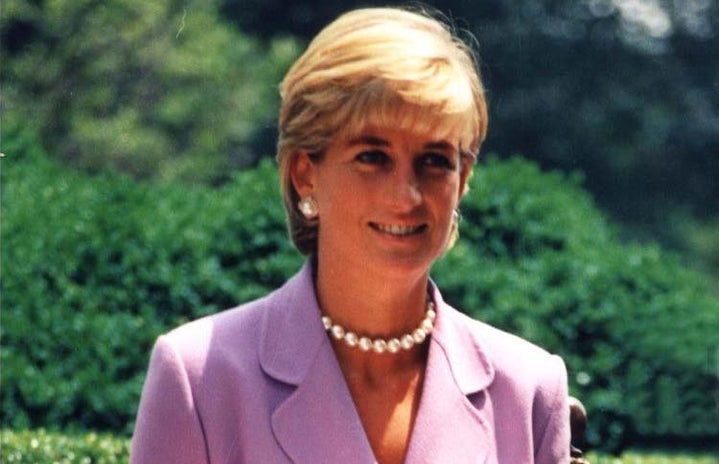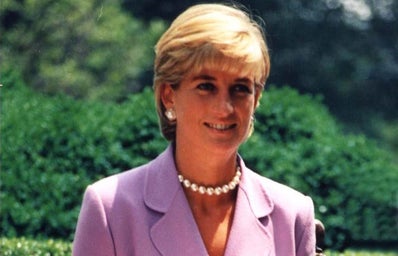A memory I recall so vividly is that of my mother telling me that Princess Diana is the most beautiful woman in the world. I always believed my mother put this forth as an attempt to console me about the qualms I had when a haircut didn’t turn out the way I wanted it to (if you look up ‘Diana bob’ online, you will know what haircut I am talking about). As far as the internet is concerned, Princess Diana owns the bob haircut and any attempt at a bob is an ode to her. I recently learned that I am not the only one who heard the very same statement my mother made all those years ago. I blame this statement on my consequential lifelong fascination with the Royals, but little did I know that it was not just me in this conflict-fueled fascination. Why conflict? I grew up in India where we are introduced to British colonialism and its effects that still echo our cities and towns right from primary school. At the same time, I grew up with Disney princesses and their quests for their Prince Charming alongside the fact that before me was a real-life royal family. So the conflict arises from the curiosity that stems from wanting to look into the IRL royal family—something I came across only in fairytales—and knowing the pain they’ve inflicted on numerous countries around the world.
It has been 75 years since India got its Independence from over 200 years of British rule. In my hometown of Bangalore, a city that has established itself as “the Silicon Valley of India”, you will come across not just an 11ft statue of Queen Victoria right at the entrance of one of the city’s most popular parks, but you will also find a statue of King Edward VII on the other end of the park. The park’s name? Cubbon Park. Named after Sir Mark Cubbon, a British army officer who was the longest-serving commissioner of the time. As is the case with Commonwealth countries around the world, the remnants of the British empire are all around even today. The tangible remnants of a difficult past have opened debate on whether these statues still deserve a place in our city. The statues have been vandalised in recent years and some pushed for their removal. Others argue that it is a piece of history, something we must accept and its removal won’t erase the past. I believe the statues remind us to accept that past but in turn, also honour and reflect on the strides we have made as a country since then. People’s strong sentiments, especially negative ones about the statues, showed me that since India has changed so much compared to the country it was just 75 years ago, it is so easy, especially for people my age, to forget the brutal and painful past of the country. But there are still people who feel its effects even today and this is a stark contrast to how those not affected by these sentiments view the Royals today.
As humans, it almost seems like we have an inevitable attraction to romance, and to romanticise anything and everything, even imperialism and other cruel narratives. The narrative of Prince Charming and the desire to be treated “like a queen” is all too familiar. So perhaps we only have ourselves to blame, when it comes to the shift in how a lot of the world views the Royals. The Royals are treated like celebrities. While watching a documentary on Princess Di, I couldn’t help but compare how she was greeted wherever she went, with swarming people holding ‘We Love Di’ posters hoping to catch a glimpse of her, to how young K-pop idols today are welcomed at airports. Which is a stark contrast to how previous monarchs were greeted, with fear when their authority was above all else in the past. I have since realised I treated them with this celebrity-like status as well when I indulged in reading and discussing tabloid pieces about their whereabouts and actions. We look at the Royals as this untouchable institution, which perhaps comes from the fact that this was a reality once upon a time. We extend this meaning and perpetuate it in everyday conversation when we bring up expressions like ‘being treated like a princess’. The Kardashians are celebrities in their own right, yet you will find magazines calling them “the American Royal family”, as if the celebrity status was not enough, the royalty status suddenly puts them in a way echelons above all else. The Queen’s passing this year reminded me of the celebrity-like and godly presence the Royals have. As I scrolled through Twitter that day, I came across conflicting opinions from people all over the world. Some deeply saddened by the passing of this figure whose presence never truly meant anything consequential in their lives, to people criticizing the aforementioned for supporting all the evils that Queen Elizabeth’s era witnessed. While the Queen should be mourned as an individual, it is important to remember all that her reign represented to the rest of the world. It is so easy to be disillusioned by all that the romanticism of the monarchy. While I am still fascinated by it all, I realized we shouldn’t forget the role the institution has played in history and the repercussions that that role has had on the world—a world where those repercussions are still seen.
As someone who finds watching wedding videos a drag, I didn’t have such sentiments watching the wedding of Kate Middleton and Prince William on TV when I was twelve. I still remember watching it with rapt attention. Of course, watching royal weddings on TV is only one of the many other ways I’ve consumed and been fed Royal content. Netflix released the fifth season of The Crown not too long ago, and I couldn’t be happier. I have expectantly waited year after year for seasons of The Crown. The tremendous success of shows like The Crown to movies like The King’s Speech reaffirms not just my fascination, but the world’s fascination with the Royals. The silver screen, however, does have the liberty to blur facts and present the Royals in the dramatic and juicy way we wish to see. All these further fuels the narrative of the godly, untouchable and unattainable presence of the Royals. A narrative that I have also admittedly given in to for years now. Shows of a similar aristocratic depicting genre make us wish we lived this extravagant Bridgerton-esque life, all the while conveniently forgetting that these shows are based in a time when World Wars and slavery were a reality of the time.
I agree that it is still enjoyable to indulge in this fantasy that we have romanticized for years. But I think it is important to be mindful of this fantasy. The complexity of the meaning of the Royals and their presence in the times we live in shouldn’t be ignored. The glamorous and (stolen) jewels of this life are fascinating and it is hard for me to unlearn referring to my future significant other as Prince Charming. But perhaps it is time to actively move towards that. Our Prince Charming is human and I think there’s so much beauty in that.


